Article's Content
Higher education is in the middle of a major shift.
Students — especially those with some college, no credentials (SCNC) or working professionals — now prioritize cost, outcomes, and flexibility over campus prestige. Programs that promise credible credentials, online convenience, and clear paths to employment consistently win out over glossy campus marketing.
At the same time, interest in online learning is accelerating.
According to the 2025 edition of the Changing Landscape of Online Education (CHLOE) Project report, the majority of higher ed executives report rising demand for online learning across graduate (74%), adult undergraduate (66%), and traditional-aged students (60%).
This shift creates a new growth opportunity: meet undecided, degree-curious searchers where they start — Google.
The University of Central Florida (UCF) has built an organic search strategy that captures these students early and converts them into applicants. Let’s dissect their strategy.
How UCF Drives Discovery With Non-Branded Organic Search Traffic
According to SimilarWeb, UCF’s website traffic is split between direct (48%) and organic search (42%). Direct traffic reflects enrolled students using the portal, but the real growth story lies in non-branded organic traffic — searchers who don’t yet know UCF exists.
- Branded traffic: Queries that include UCF by name (e.g., UCF online degrees).
- Non-branded traffic: Queries about careers or degrees without referencing a school (e.g., types of nurses and salaries).
UCF’s /online/ subfolder alone attracts approximately 48,000 monthly visits, valued at $243,000 in equivalent paid traffic. Even more important, UCF Online holds approximately 1,500 top-3 SERP positions, the majority being for non-branded queries like:
- bsn vs rn
- types of nurses and salaries
- online masters degree
- what does steam stand for
- online nursing programs

These keywords map to problems and pathways, not institutions. By ranking for them, UCF wins attention from students still exploring options. In a shrinking enrollment market, discovery — not conversion — is the battlefield.
Institutions with full enrollment funnels create discoverable, high-value content across those touchpoints, then tie it back to clear program exploration paths.
Think of UCF’s online subfolder as their discovery engine.
The key is that these articles don’t exist in isolation, They’re structured in a way that helps UCF move students from discovery into enrollment.
Turning Discovery Into Consideration with Program-Specific Funnels
UCF’s organic engine looks like a topic cluster but functions like a mini funnel, moving visitors from awareness to consideration using the Hub-and-Spoke model (some of you might call this the ‘pillar-and-post’ methodology).
The Hub: Central page that explains the offer and captures inquiries (e.g., /online/nursing-degrees/).
The Spokes: Informational guides targeting related queries, all linking back to the hub.
For nursing, the hub lists all programs (Bachelor’s, Master’s, graduate certificates, and doctorates), and includes rankings and accreditations as well as a short lead form.
The spokes cover:
- How Long Is Nursing School? (timelines)
- 19 Types of Nurses – What Each Do and Their Salaries (roles/outcomes)
- DNP vs PhD in Nursing: Which Is Better for Me? (advanced degrees)
- The Real Difference Between an RN License and a BSN Degree (pathway comparison)
- What Is an MSN Degree in Nursing? (degree definition/fit)
These spoke pages are in a nested /news/ subfolder that sits within the /online/nursing-degrees/ setup. But instead of providing timely news, this subfolder essentially operates as a blog subfolder.
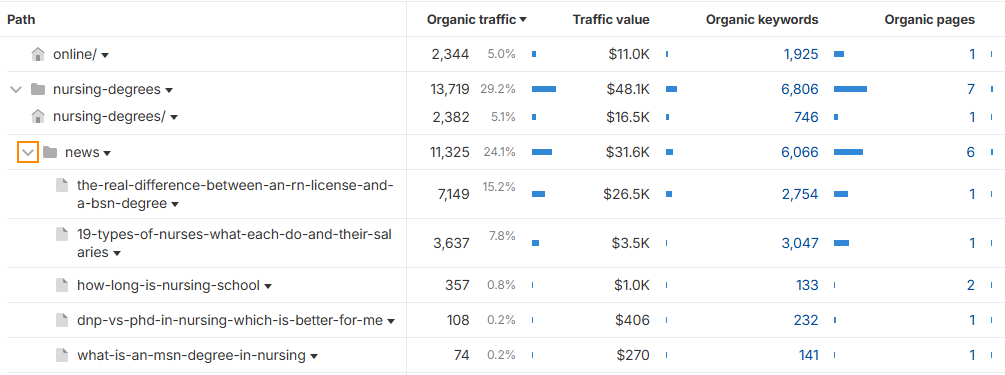
Two spokes pages do the heavy lifting:
- The Real Difference Between an RN License and a BSN Degree – 7,250 monthly visits
- 19 Types of Nurses – What Each Do and Their Salaries – 3,633 monthly visits
This success isn’t accidental.
If you look at the intent behind the topics, this cluster is designed to move potential students down the enrollment funnel. Visitors may reach the site because they want to know about different types of nursing specialties, follow an internal link to the page explaining what an MSN degree is, and then look for information on how long nursing school is.
From an SEO perspective, UCF writes to match real searcher language using head terms and “People Also Ask” style subheads. This increases the odds of ranking while aligning with how prospects actually think.
For the RN vs BSN piece, they break up the content using top and mid-funnel keywords related to these two nursing classifications. This keyword coverage helps the page rank in a top 3 SERP spot for nearly 400 keyword variations that contain either or both of the terms.
Many of these terms are in the sweet spot of high search volume with little competition:
- Bsn degree: 17K search volume, KD of 24
- Bsn vs rn: 4.1K search volume, KD of 3
- Rn bsn: 3.4K search volume, KD of 16
- Rn bsn meaning: 1.1K search volume, KD of 5
- Difference between rn and bsn: 1.6k search volume, KD of 4
Every month, tens of thousands of people enter these keywords into Google as part of their research. The low keyword difficulty score suggests that there aren’t many authoritative sites competing for these terms. So, with a single post that incorporates these keywords throughout the copy, UCF has shot up the ranks across a number of SERPs.
The result: Thousands of potential nursing students discover UCF every month, and are funnelled toward degree exploration.
The nursing types and salaries page shows why information-rich listicles are still such a powerful asset for driving organic search traffic.
It begins with a few PAA-style sections discussing which specialties are in demand (Where are nurses working? What nursing roles are in demand?) before diving into the longer section on types of nurses, which fills the page with long-tail keyword variations of the main topic.

The results are similar to the RN vs BSN piece’s: UCF ranks in a top-3 SERP spot for over 175 low- to mid-volume keywords like:
| Keyword | Search Volume | Keyword Difficulty (KD) |
| How much do nurses get paid | 6.5K | 46 |
| Flight nurse salary | 3.5K | 1 |
| Highest paid nurse | 1.8K | 17 |
| Highest paying nursing jobs | 1.8K | 8 |
| Types of nurses | 1.8K | 24 |
This page is also great for increasing EEAT: It cites salary and job figures using external links to authoritative, credible sources like the Bureau of Labor Statistics, American Association of Colleges of Nursing, and Glassdoor.
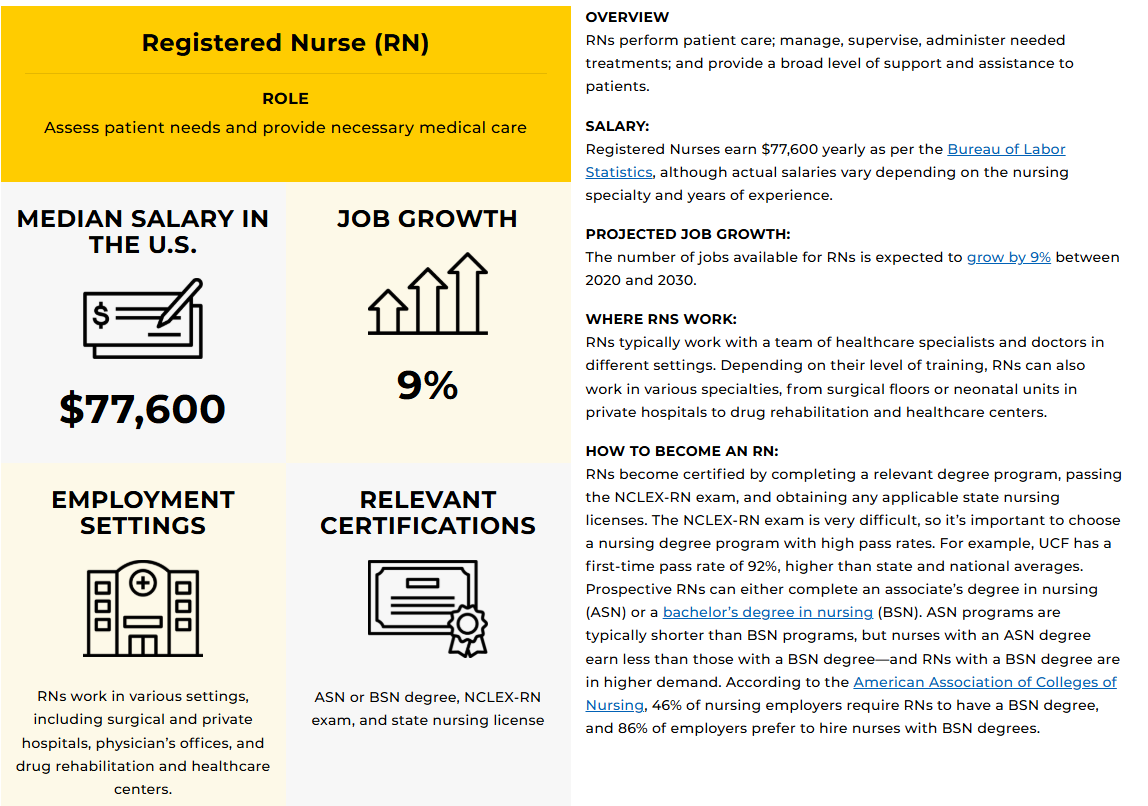
This information-rich approach mirrors Western Governors University’s organic strategy. Their healthcare administrator career guide drives over 2,100 monthly visits by prominently featuring salary data and job growth projections to address the “will this degree help me make a living?” concern of today’s students.
While the other pages in UCF’s nursing news cluster bring in far less monthly organic traffic (between 360 and 74 monthly organic visits), they all play an important SEO and messaging role. Specifically, they directly address searcher intent while qualifying leads.
Each spoke serves a second, equally important purpose: It helps move organic visitors to the UCF enrollment funnel.
- How long is nursing school? – Answers time investment concerns and showcases accelerated options — perfect for working adults considering a return to education.
- 19 types of nurses and their salaries – Expands career horizons while anchoring outcomes in concrete roles and compensation.
- RN license vs BSN degree – Resolves high-friction confusion early on and introduces the RN-to-BSN pathway.
But that’s not all. The same cluster-funnel tactic shows up in UCFs Engineering, Leadership & Management, and other categories. Each online offering has a hub that curates guides and directs programs.

It’s a repeatable playbook that turns informational search into degree and institution exploration.
Dedicated Landing Pages That Turn Consideration into Conversion Opportunities
Discovery and consideration matter, but enrollment decisions hinge on trust. UCF’s landing pages layer credibility and conversion elements that reduce friction for ROI-sensitive adult learners.
In the online nursing degree cluster, the landing page brings in over 2,300 organic visits per month. The page converts by combining:
- Immediate lead capture above the fold. A “success coach contact” form appears prominently before any program details, capturing high-intent visitors while they’re engaged.
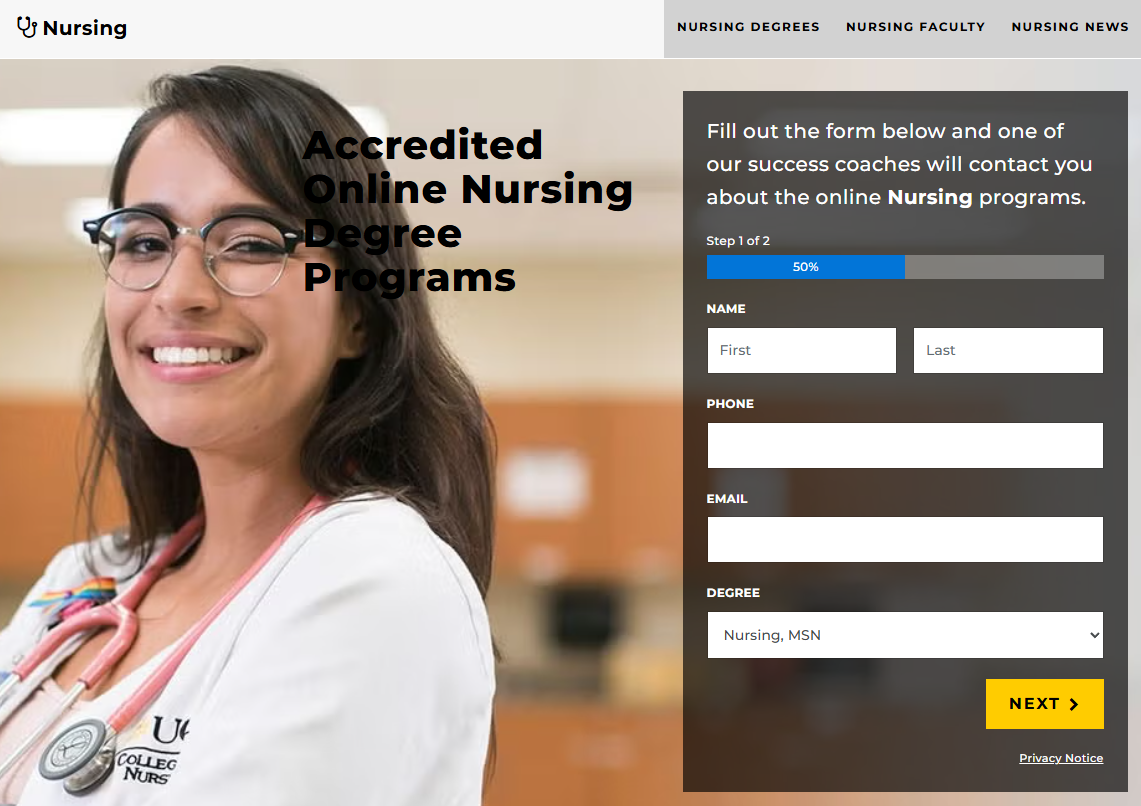
- External validation. The “U.S. News and World Report Best Grad Nursing” badge establishes immediate credibility and differentiates it from competitors in a crowded field.
- Industry-aligned value proposition. The landing page copy emphasizes a “transitionary period” in healthcare and increased “demand for highly skilled nursing professionals,” connecting degree pursuit to market opportunity.

- Program portfolio. UCF displays their online nursing degrees on a clear visual hierarchy that shows bachelor’s through doctoral options and lets prospects self-segment by current credential level and career goals.
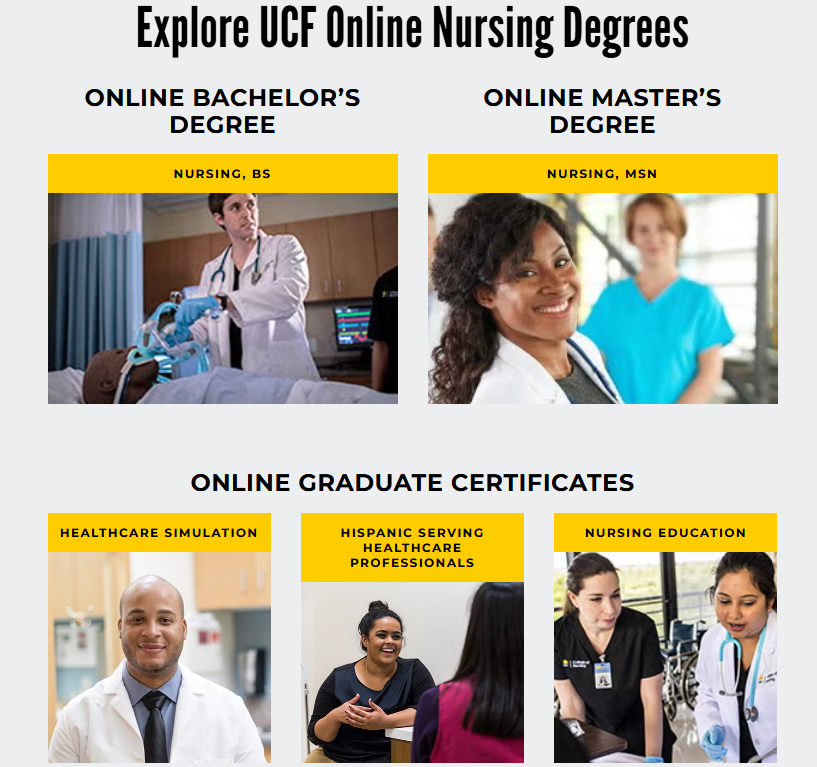
- Working professional focus. Messaging specifically addresses “working nursing professionals” with emphasis on flexibility, which is critical for the adult learner demographic.
- Social proof. Student testimonial from Kimberly Canarie-Baken includes her specific role (Director of Nursing) and program track, making the success story tangible and relatable.

- Faculty expertise. Individual faculty profiles with credentials, specializations, and titles demonstrate program quality and expertise depth — similar to the high-EEAT strategy SNHU deploys on their newsroom pages.
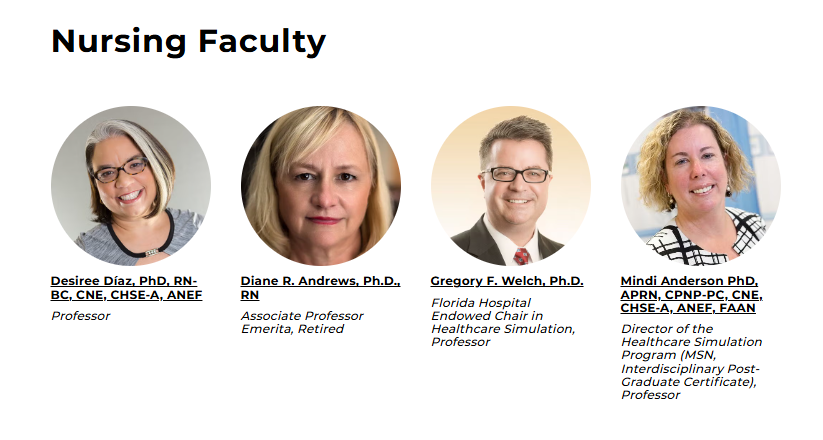
- Evergreen content integration. The “Latest Nursing News” section features and interlinks to the core guides (types of nurses, school duration, degree comparisons) as well as relevant posts related to healthcare, helping potential students move closer to a final decision.

- Clear next steps with support emphasis. Contact information includes specific hours and positioning around “help finding an online degree that works for you,” reducing friction for uncertain prospects.
UCF layers these trust signals precisely where decisions happen, creating a frictionless path from discovery to application.
Build Your Institution’s Brand Discovery Engine with Content Strategy
UCF’s organic search strategy shows how higher ed institutions can systematically fill their pipeline without massive ad budgets. By:
- Capturing non-branded discovery.
- Building mini-funnels around high-demand programs.
- Designing landing pages that convert consideration into enrollment.
UCF turns 48,000 monthly organic visits worth $243,000 into real enrollment conversations. The lesson is clear: discovery-first content builds awareness, and pipeline.
Let’s build your institution’s discovery engine. Reach out to Foundation’s Higher Ed team today.







